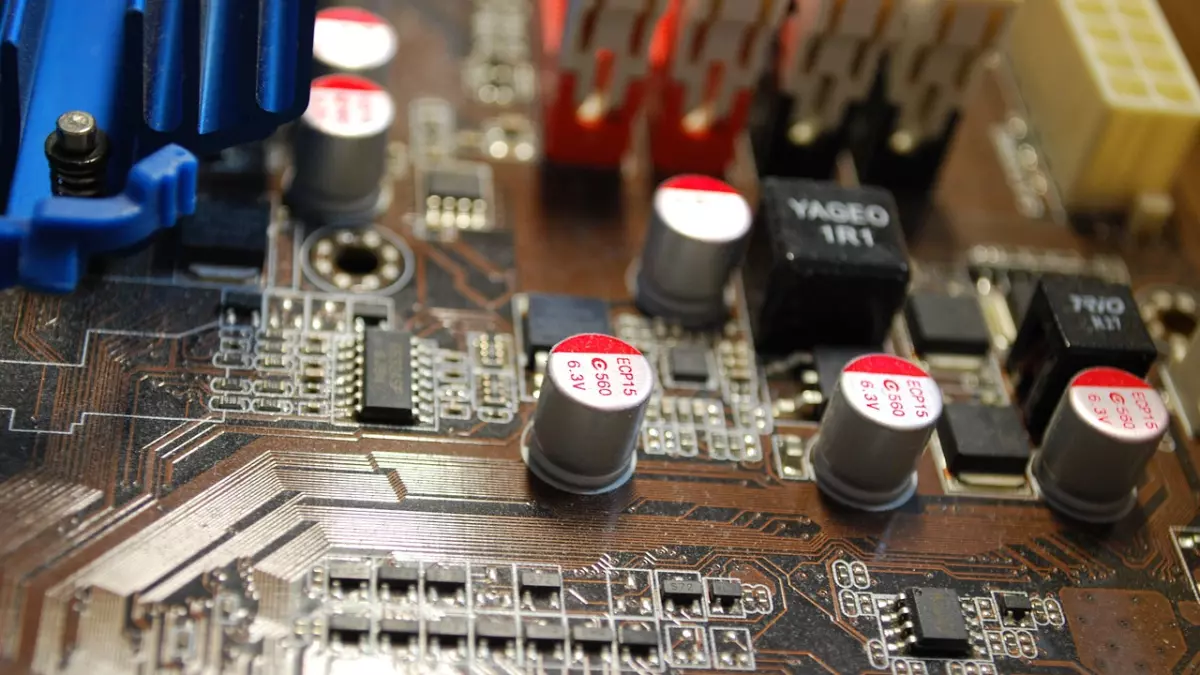Intel's Chip Power
Most people think Intel is just about making processors for laptops and desktops. But that's only scratching the surface of what this tech giant does.

By Jason Patel
Let’s start with the basics: Intel is a semiconductor company. But what does that mean in the grand scheme of things? Semiconductors are the backbone of modern electronics, and Intel has been a key player in this space for decades. Their chips power everything from personal computers to data centers, and even the cloud. But Intel’s business model is much more than just producing chips—it’s a complex, multi-faceted strategy that keeps them at the forefront of the tech industry.
Intel's business model revolves around three key pillars: manufacturing, innovation, and ecosystem development. These pillars allow Intel to maintain its dominance in the semiconductor industry while also expanding into new markets like AI, 5G, and autonomous driving. But how exactly does Intel leverage these pillars to stay ahead of the competition?
Manufacturing: The Heart of Intel's Strategy
One of the most critical aspects of Intel's business model is its focus on manufacturing. Unlike many of its competitors, Intel designs and manufactures its own chips. This vertical integration gives Intel a significant advantage in terms of control over the production process, allowing them to optimize performance, reduce costs, and ensure a steady supply of chips.
Intel’s manufacturing prowess is built on its ability to innovate at the process level. The company has consistently pushed the boundaries of semiconductor manufacturing, developing smaller and more efficient transistors with each new generation of chips. This has allowed Intel to maintain its position as a leader in the semiconductor industry, even as competition from companies like AMD and TSMC has intensified.
However, Intel’s manufacturing strategy is not without its challenges. In recent years, the company has faced delays in the development of its 10nm and 7nm process nodes, allowing competitors to catch up. But Intel is not standing still. The company has announced plans to invest heavily in new manufacturing facilities and technologies, including its ambitious IDM 2.0 strategy, which aims to combine in-house manufacturing with external foundry partnerships.
Innovation: Staying Ahead of the Curve
Innovation is another key pillar of Intel’s business model. The company invests billions of dollars each year in research and development, with a focus on creating new technologies that will drive the future of computing. This includes everything from AI and machine learning to quantum computing and 5G.
One of the most exciting areas of innovation for Intel is AI. The company has developed a range of AI-focused chips, including its Xeon processors and Nervana neural network processors, which are designed to accelerate AI workloads in data centers and the cloud. Intel is also working on AI at the edge, with chips like the Movidius Myriad X, which powers AI applications in drones, robots, and smart cameras.
Intel’s innovation efforts are not limited to hardware. The company is also investing in software and services, with a focus on creating an ecosystem that supports its hardware products. This includes everything from developer tools and libraries to cloud services and AI frameworks. By building a comprehensive ecosystem around its products, Intel is able to create a virtuous cycle of innovation that drives demand for its chips.
Ecosystem Development: Building a Future-Proof Platform
The third pillar of Intel’s business model is ecosystem development. Intel understands that its success is not just about making great chips—it’s about creating a platform that enables other companies to build on top of its technology. This is where Intel’s ecosystem strategy comes into play.
Intel works closely with a wide range of partners, including hardware manufacturers, software developers, and cloud providers, to create a comprehensive ecosystem around its products. This ecosystem allows Intel to drive adoption of its chips in new markets, such as AI, 5G, and autonomous driving, while also ensuring that its products are compatible with a wide range of devices and applications.
One of the most important aspects of Intel’s ecosystem strategy is its focus on open standards. Intel is a strong advocate for open standards in the tech industry, and the company works closely with organizations like the Open Compute Project and the Linux Foundation to promote interoperability and collaboration. By supporting open standards, Intel is able to create a more flexible and scalable platform that can adapt to the changing needs of the tech industry.
The Future of Intel's Business Model
So, what does the future hold for Intel? The company is facing increasing competition from companies like AMD, TSMC, and Nvidia, but Intel’s business model is designed to help it stay ahead of the curve. By focusing on manufacturing, innovation, and ecosystem development, Intel is well-positioned to continue leading the semiconductor industry for years to come.
However, Intel will need to address some key challenges if it wants to maintain its dominance. The company’s delays in developing new process nodes have allowed competitors to gain ground, and Intel will need to execute its IDM 2.0 strategy effectively if it wants to regain its manufacturing edge. Additionally, Intel will need to continue investing in new technologies like AI, 5G, and quantum computing to stay ahead of the competition.
In conclusion, Intel’s business model is a complex and multi-faceted strategy that has allowed the company to maintain its dominance in the semiconductor industry for decades. By focusing on manufacturing, innovation, and ecosystem development, Intel is well-positioned to continue leading the tech industry into the future.





